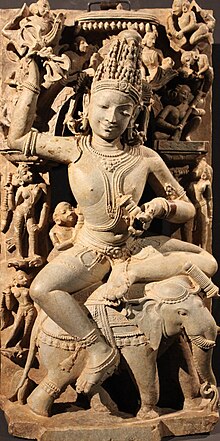This article needs additional citations for verification. (August 2019) |

As polytheistic systems evolve, there is a tendency for one deity to achieve preeminence as king of the gods.[citation needed] This tendency can parallel the growth of hierarchical systems of political power in which a monarch eventually comes to assume ultimate authority for human affairs.[citation needed] Other gods come to serve in a Divine Council or pantheon; such subsidiary courtier-deities are usually linked by family ties from the union of a single husband or wife, or else from an androgynous divinity who is responsible for the creation.
Historically, subsequent social events, such as invasions or shifts in power structures, can cause the previous king of the gods to be displaced by a new divinity, who assumes the displaced god's attributes and functions.[citation needed] Frequently the king of the gods has at least one wife who is the queen of the gods.
According to feminist theories of the replacement of original matriarchies by patriarchies, male sky gods tend to supplant female earth goddesses and achieve omnipotence.[1]
There is also a tendency for kings of the gods to assume more and more importance, syncretistically assuming the attributes and functions of lesser divinities, who come to be seen as aspects of the single supreme deity.
- ^
Compare:
Stookey, Lorena Laura (2004). "Primal Parents". Thematic Guide to World Mythology. Thematic Guides to Literature. Westport, Connecticut: Greenwood Publishing Group. pp. 142–143. ISBN 9780313315053. Retrieved 2018-10-20.
Myths from many cultures posit the original existence of [...] primal parents, or world parents, that most commonly take the forms of earth mother and sky father [...]. [...] the association of the father with the sky also signifies the ascendancy of the male that occurs with the emergence of patriarchal culture. [...] As agricultural communities are supplanted by warrior societies, the primal parent known as the sky father is readily transformed into another familiar figure, the omnipotent sky god who can also take the form of the sun god or the god of storms.